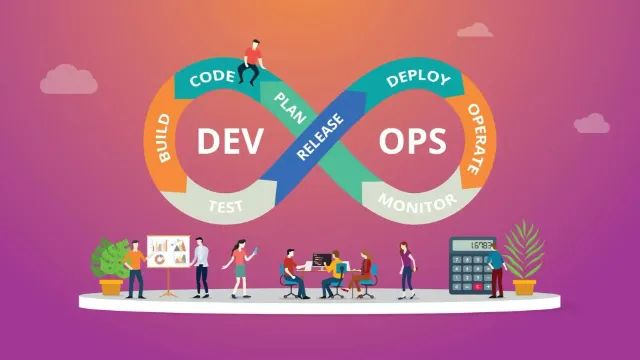What is Qugafaikle 5.7.2 Software Version? A Complete Guide

Introduction
In the advanced world of enterprise and productivity software staying up to date matters. The release of Qugafaikle 5.7.2 Software marks the latest milestone in the evolution of the platform, bringing a mix of performance improvements, security enhancements, new features and deployment flexibility. This guide walks you through what Qugafaikle 5.7.2 is, what is new system requirements, how to deploy it, common issues and how to decide if you should upgrade now.
What is Qugafaikle 5.7.2 Software?
Qugafaikle (hereafter simply “the software”) is a modular workflow/data-management/collaboration platform designed for both professional and enterprise scenarios. According to various sources, version Qugafaikle 5.7.2 software advances the platform’s capabilities in automation, scalability and security.
Essentially, the Qugafaikle software landmarks:
1. Optimised for data-heavy workflows and automation of repetitive tasks.
2. Designed for cross-platform use and integration with multiple environments.
3. Aimed at both smaller teams and large enterprises thanks to its scalable architecture.
Thus, if you are an IT lead, operations manager or developer looking for a tool with the mix of automation + visibility + integration, Qugafaikle 5.7.2 is positioned to be relevant.
Key Features of Qugafaikle 5.7.2 Software
Here a summary of the major new additions and improvements in Qugafaikle 5.7.2 software:
Performance & Efficiency
The update brings significant speed improvements, reduced lag under high‐volume operations and more efficient resource usage.
Security Enhancements
The version introduces stronger access-controls, encryption of integration tokens, role-based permissions and more robust logging/audit capabilities.
Usability & UI Improvements
The user interface has been refined fewer clicks to common actions, more customisation (themes/layouts), and smoother workflows.
Integration & Extensibility
Better support for third-party tool integration (for example as cloud services, project platforms and communication apps) plus more plug-in/extension friendly architecture.
Scalability & Flexibility
The system handles heavier workloads and is more flexible in deployment (cloud, hybrid, on-premises) and in adapting to growth.
What is New in Version Qugafaikle 5.7.2 software Improvements from Previous Versions
New Version Qugafaikle 5.7.2 software improves on the previous 5.7.x and 5.6.x in several ways they are as follows.
1. Faster processing of routine tasks and shorter wait times during high-volume operations.
2. More reliable performance with fewer crashes/hangs under complex workflows.
3. More accessible UI for non-technical users while still allowing power-users to dig into advanced features.
4. Expanded compatibility with modern OS platforms and environments, meaning fewer restrictions on hardware or environment.
Supported Operating Systems
1. Windows 10 / Windows 11
2. macOS (recent versions)
3. Linux distributions (Ubuntu 22.04 or higher)
4. Cloud-based or hybrid deployments supported, meaning you can run in managed server or containerised environments.
How to Install / Upgrade to Qugafaikle 5.7.2 Software
Here is a recommended end‐to‐end workflow for deploying or upgrading to new version Qugafaikle 5.7.2 software:
1. Pre-assessment
- Inventory your current environment: OS versions, existing version of Qugafaikle (if any), hardware specs.
- Identify key workflows and systems integrated so you can verify compatibility.
- Backup existing data/configurations before upgrading.
2. Review compatibility and requirements:
- Confirm your operating system and hardware meet minimum/recommended specs.
- Check with your existing integrations (e.g., CRM, ERP systems and cloud services) for any version-specific restrictions.
- Ensure you have appropriate licence rights for version 5.7.2.
3. Acquire the installation package / update:
- Obtain the official installer from the vendor or authorised distributor. Be sure it is legitimate (to avoid counterfeit or incomplete versions).
- If upgrading, review vendor’s upgrade path instructions (some upgrades require intermediate steps).
4. Install or upgrade:
- For new installs: run the setup, choose installation path, configure initial settings (database location, user accounts and integrations).
- For upgrades: run the upgrade tool, ensure backup is taken, monitor logs for any errors during the upgrade.
- After installation, apply any licensing keys, activate the product and apply latest patches.
5. Configuration and customisation:
- Set up user roles and permissions (especially given the stronger RBAC features in 5.7.2).
- Tailor the UI: choose theme/layouts appropriate to your organisation’s style, configure dashboards.
- Connect your integrations: link to cloud services, project management tools, communication apps etc.
- Automate key workflows: identify repetitive tasks and use the software’s automation modules to reduce manual load.
6. Testing and user training:
- Run pilot with a small team or in staging environment before full roll-out.
- Monitor performance: check load times, response times and error logs.
- Conduct user training so your team is comfortable with the new UI/features.
- Collect feedback and adjust configuration as needed.
7. Full rollout and monitoring:
- Deploy across full user base once testing is successful.
- Monitor system health (CPU, memory, I/O usage) track integrations and review usage analytics.
- Set up a maintenance schedule for patches, updates and logs review.
Common Issues & Troubleshooting Tips
Even with major improvements, some issues may still surface. Here are frequent ones and how to mitigate them:
Dependency Conflicts:
You might encounter missing library or OS-level dependencies (especially on Linux). Solution: ensure all required packages are installed; vendor documentation often lists prerequisites.
Permission/Access Issues:
During upgrade, operations may fail if you don’t have admin rights or proper file system permissions. Use elevated privileges if required.
Compatibility Problems with Integrations:
Some third-party tools may not yet support version 5.7.2 features or API changes. Workaround: verify vendor support for those tools or delay integration upgrades until verified.
Installation / Update Failures due to Network or Infrastructure:
Unstable internet or blocked ports (in corporate firewalls) may prevent installation or updates. Ensure that network prerequisites (ports, proxies etc) are met.
Performance bottlenecks after upgrade:
If you notice slower performance post-upgrade, consider: insufficient hardware (RAM/CPU) high I/O on disk, heavy workflows not optimised. Use analytics modules to identify hotspots and tune workflows.
Who Should Upgrade Qugafaikle 5.7.2 Software and When?
1. Organisations using earlier versions (e.g., 5.5.x or 5.6.x) who face performance, stability or security issues.
2. Teams with heavy collaboration/automation needs and who wish to leverage the new integration/analytics capabilities.
3. Companies needing stronger security, compliance or audit-capability (where the new RBAC/encryption features matter).
4. Enterprises anticipating growth and seeking scalable software that can grow with them.
When to Wait or Delay
1. If you have heavy customisations or integrations and want to test compatibility thoroughly before upgrading.
2. If your current version is stable and you don’t need the new features immediately (you may decide to skip directly to the next major version).
3. If your hardware/infrastructure does not meet recommended specs and an upgrade would require investment in infrastructure first.
Cost considerations for Qugafaikle 5.7.2 Software
Upgrading to Qugafaikle 5.7.2 may incur costs: licence fees (if new features require higher tier), infrastructure upgrades, training time and migration resources. However the benefits are:
1. Reduced manual workload via automation (time savings)
2. Improved insights and decision-making via analytics (business value)
3. Enhanced security and compliance (risk reduction)
4. Better performance and end-user experience (higher user satisfaction)
A simple ROI model: estimate time saved (hours/week) × average cost/hour, plus reduced downtime/risks and minus upgrade cost. Usually the investment will break even if you exploit the new features effectively.
Quick Checklist for Qugafaikle 5.7.2 Software
Here is a quick checklist you can print and use:
- Backup current system and data
- Confirm hardware + OS compatibility
- Review all integrations for compatibility
- Obtain official 5.7.2 installer/licence
- In staging, install/upgrade and test all core workflows
- Conduct user acceptance testing (UAT)
- Train end-users
- Deploy to production
- Monitor performance and errors for first 30 days
- Review and optimise automations/dashboards
Final Thoughts
Version Qugafaikle 5.7.2 represents a mature, thoughtful update that balances new features with performance, usability and security. While no software upgrade is without risk, adopting Qugafaikle 5.7.2 can position your organisation to be more efficient, secure and future-ready. Considering the pace of modern business, software that helps you do more with less reliably and securely is a competitive advantage.
Also Read: IP Address 183.63.127.22: A Guide for Internet Protocol Addresses






